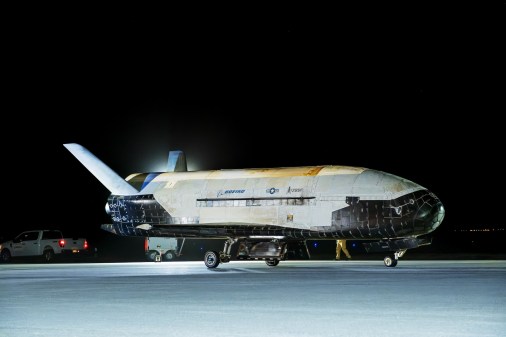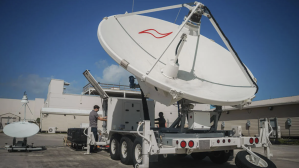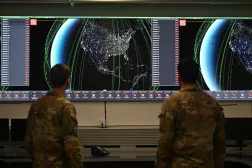Space Force awards Boeing $2.8B deal to deliver next-gen nuclear communication satellites

The Space Force has given Boeing a $2.8 billion contract for the service’s effort to modernize space-based nuclear command, control and communications (NC3) capabilities, Space Systems Command announced July 3.
Boeing beat out Northrop Grumman for the contract, which includes design and delivery of the first two satellites for the Evolved Strategic Satellite Communications program and options for two additional birds in the future. The award supports initial operational capability for the ESS program and is the first step to a “phased approach to rapidly proliferate a diverse satellite constellation” that can conduct strategic command and control, SSC said in a statement.
The ESS space vehicles will eventually replace the nuclear mission of the service’s current Advanced Extremely High Frequency (AEHF) system, comprising six satellites in geostationary orbit that provide encrypted communications for both strategic and tactical operations. The constellation will include satellites stationed across multiple orbits, and use highly protected waveform and other classified capabilities to provide secure NC3 to warfighters.
“The U.S. needs a strategic national security architecture that works without fail, with the highest level of protection and capability,” Kay Sears, vice president and general manager of Boeing Space, Intelligence and Weapon Systems, said in a statement. “We designed an innovative system to provide guaranteed communication to address an evolving threat environment in space.”
Boeing and Northrop Grumman built prototype systems under Middle Tier of Acquisition (MTA) contracts awarded to both companies in 2020.
Work performed under the new contract is expected to wrap up in 2033, according to the Space Force.
In addition, the service expects to purchase additional satellites as part of its larger $12 billion ESS Space Segment program that “may be awarded as sole source to support full operational capability and attain global coverage, including enhanced Arctic capability,” the service noted in a press release.
The ESS program is one piece of a comprehensive effort at the Defense Department to modernize all elements of its NC3 enterprise, which includes dozens of capabilities across all warfighting domains. The complex system provides senior defense leaders situational awareness, planning, decision-making and force management capabilities for nuclear operations.
Along with the ESS space vehicles, the Space Force is developing a new ground segment for strategic ops under the Ground Resilient Integration & Framework for Operational NC3 (GRIFFON) program. Lockheed Martin is building GRIFFON under a Software Acquisition Pathway contract awarded earlier this year.
“It’s a critical time to advance U.S. space capabilities to ensure peace through strength,” Cordell DeLaPena, program executive officer for the Space Force’s Military Communications and Positioning, Navigation, and Timing Directorate, said in a statement. “The strategic communication mission requires protection, power and always-available capability, even through adversary attempts to interrupt our connectivity. These satellites will provide connectivity from space as part of a refreshed NC3 architecture for our nation.”






